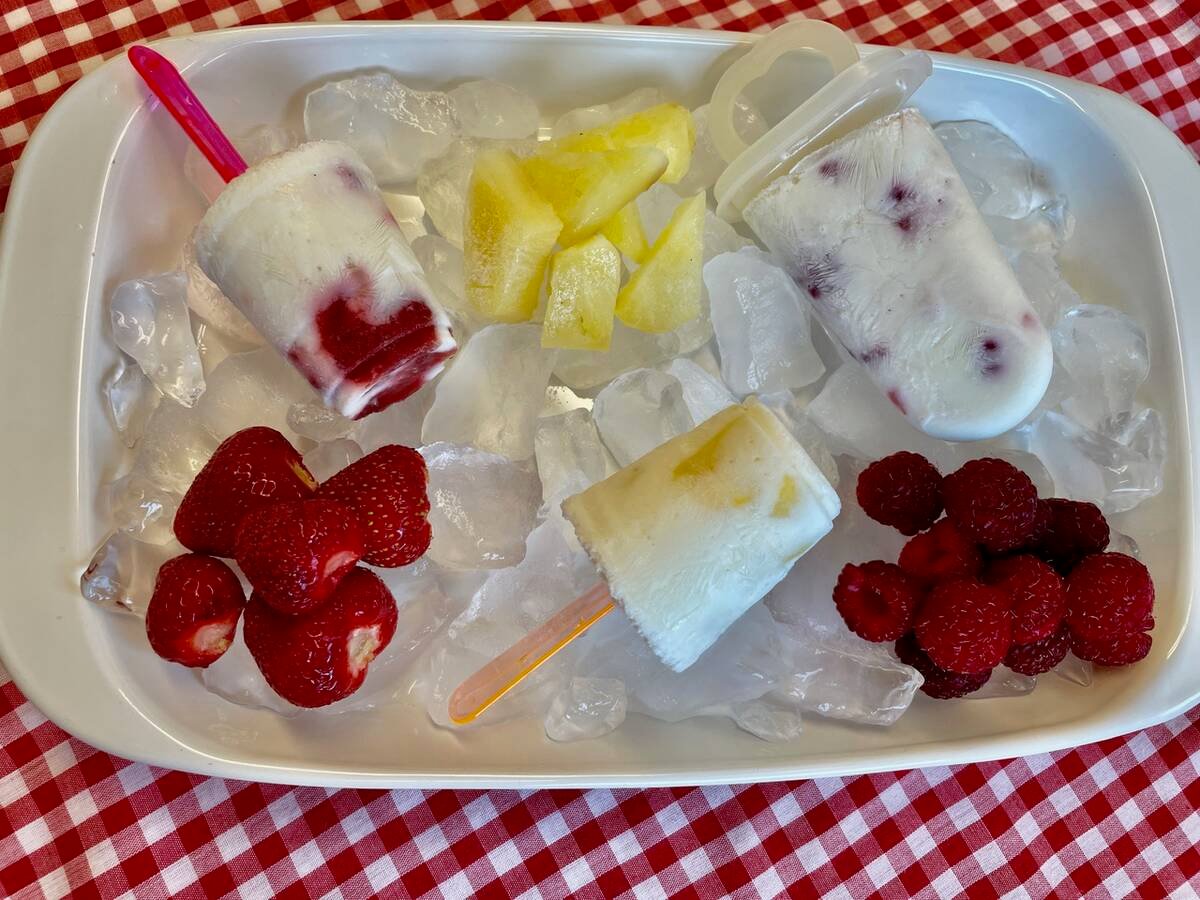With five granddaughters under five years old, our family has experience in feeding babies. Many infant feeding ideas have changed since I introduced our children to their first solid food.
The variety of food offered to babies has increased. From the basic infant cereals, peas, carrots, potatoes, meat, bananas and cooked vegetables like pumpkin, squash, sweet potatoes, broccoli and avocados are now encouraged.
Breastfeeding until the baby is six months old and then introducing iron rich foods, while continuing to nurse, is still recommended. Iron enriched rice cereal used to be the first food, but now it’s iron rich meat, poultry, deboned fish, eggs or legumes such as beans or lentils.
Read Also

Food can play a flavourful role in fun summer activities
Recipes – popsicles are made with lactose-free milk and yogurt so are perfect for those who can’t tolerate milk, while everyoneelse will also enjoy them
Breast milk is easy to digest, contains antibodies that offer protection from germs and allergies, promotes healthy weight gain and brain development and is believed to reduce the risk of Sudden Infant Death Syndrome.
The alternative is cow’s milk-based, vitamin D and iron-fortified infant formula for the first 12 months.
A full term infant will have an iron reserve developed from its mother’s blood, which will last for about six months.
Iron from meat, know as heme iron, is better absorbed than non-heme iron, which comes from plants like legumes, vegetables and cereals. Food rich in vitamin C needs to be eaten with the iron rich food to help the baby’s body absorb the iron.
Examples of food rich in iron include beef, lamb, pork, veal, liver, chicken, turkey, bison, wild meats, fish and eggs. Good grain sources are iron-fortified cereals, whole grain breads, bread, pasta and rice.
Legumes include chickpeas, lentils, dried peas and beans and good iron source vegetables are spinach, broccoli, brussels sprouts, green peas and beans. Good sources of vitamin C to serve with the iron source food include oranges, tomatoes or red peppers.
Iron is critical for healthy brain development and infant growth as well as motor and behavioural development.
Waiting beyond six months to introduce solid food increases the baby’s risk of developing an iron deficiency, which is characterized by slow weight gain, pale skin, no appetite, crankiness and fussiness.
Vitamin D is formed naturally when skin is exposed to sunlight. In Canada, we need vitamin D supplements so it is added to cow’s milk and margarine. Good natural food sources of vitamin D are salmon, tuna and liver.
Breast milk has only small amounts of vitamin D so all breastfed babies should receive a 400 IU vitamin D supplement per day.
Formula-fed infants don’t need a supplement because the vitamin D has been added to the formula.
The introduction of solids should be led by the baby’s development. He should be able to sit up without support and have good neck muscle control. He should be able to hold food in his mouth without pushing it out.
An interest in others’ food is also a signal that the baby is ready for solids. Babies that are allowed to follow their own hunger cues are believed to be less likely to overeat later in life.
The introduction of cow’s milk should be made at about age one, when the baby is getting good sources of iron and vitamin C.
Avoid food that has added salt, sugar or coatings. Introduce food separately for two to five consecutive days to watch for allergic or digestive reactions. Iron rich food should be offered first and then given two or more times each day.
Using a blender or food processor, puree the first food to a smooth texture. Change the texture to semi-solid, soft lumpy and finally soft pieces as the infant becomes more mobile and develops an interest in self-feeding.
When preparing baby food at home, freeze extra food in an ice cube tray and then store in labelled plastic bags in the freezer. Remove one or two cubes at a time and thaw in the fridge or warm in a dish of hot water or in the microwave. Always stir the food and check the temperature and discard leftovers.
Food such as nuts and eggs no longer need to be restricted, provided the baby’s chewing and swallowing skills are well developed.
A good source of vitamin C is 100 percent fruit juice but no more than two ounces (60 mL) should be given each day in a cup. Too much juice, especially apple juice, can cause diarrhea and tooth decay.
Honey should not be given to infants under one year because there is a danger of food poisoning from botulism.
To avoid choking, remove pits or seeds from fruit and cut grapes in halves or quarters. Spread nut butters thinly on a cracker rather than bread to make swallowing easier.
Each child is unique and will learn to eat solids at his own rate and some may need to try a new food several times before it is accepted.
By eight months, the infant may show signs of wanting to self-feed, and by nine to 12 months, he will probably have the skills to feed himself. An unbreakable bowl and spoon designed for little hands and infant cups will make learning to self-feed easier.
Sources: Canadian Pediatric Society, www.caringforkids.cps.ca, Health Canada www.hc-sc.gc.ca, Heartland Health Region.















